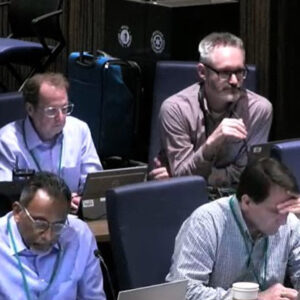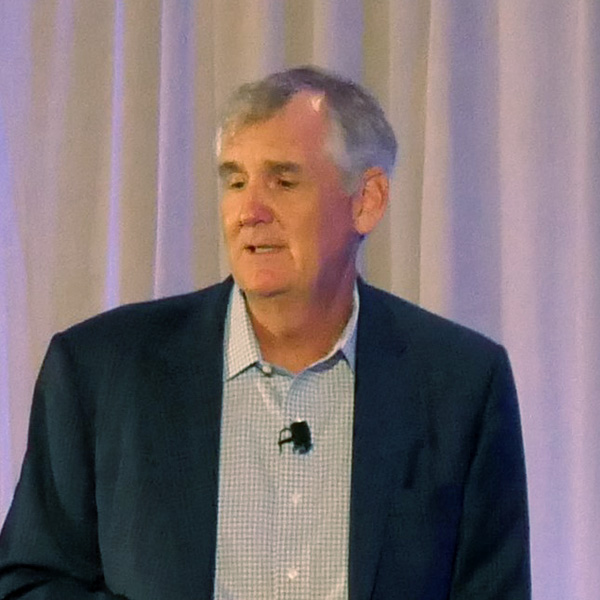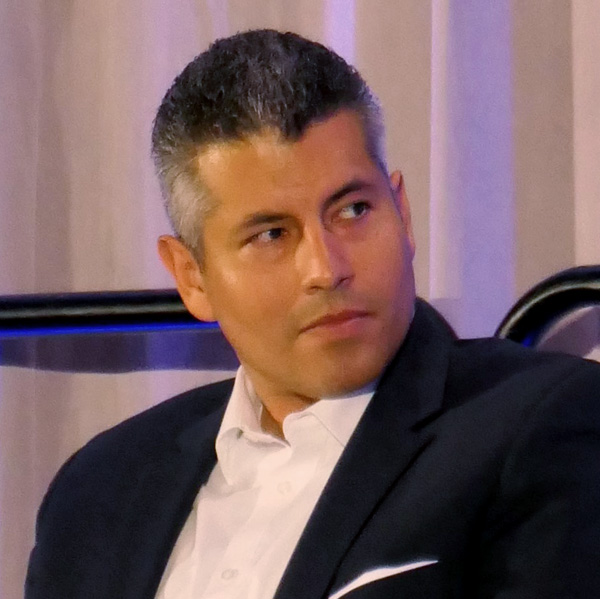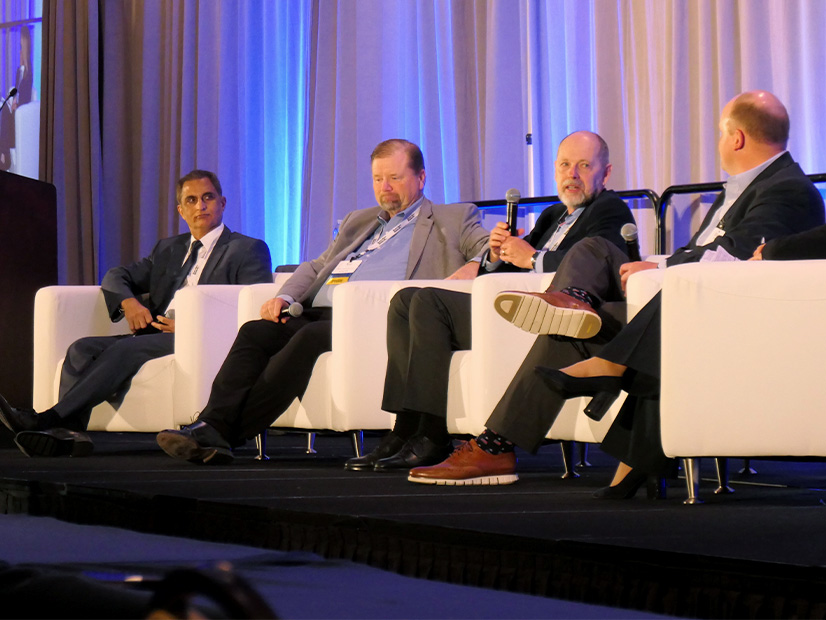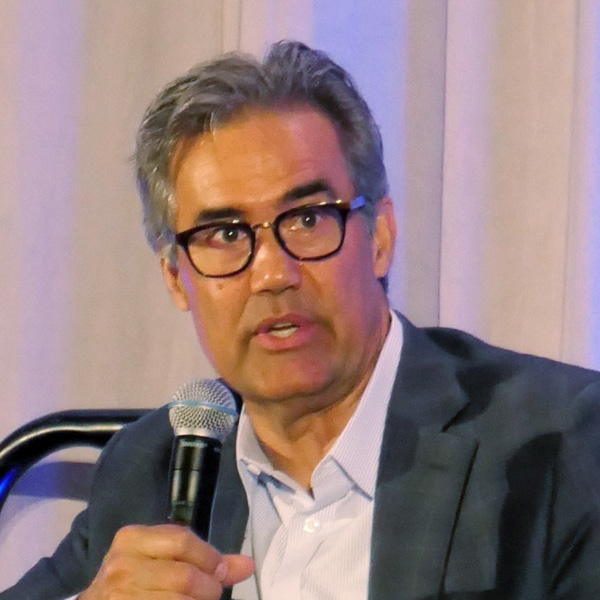FERC is set to vote on its long-awaited proposed rule on transmission planning and cost allocation for regional lines at a special open meeting May 13, the commission announced last week ahead of this month’s usual meeting (RM21-17).
Parties who have worked on the rule spoke with RTO Insider and in other venues April 22 about what they expect to see from the commission.
“I want to make sure that it’s sufficiently strong so that planners really do plan for the anticipated resource mix; so they actually are required to consider all the factors of what that future resource mix looks like,” Grid Strategies President Rob Gramlich said in an interview. “I want to make sure there’s an actual decision that gets made about cost allocation.”
States should obviously participate in the cost allocation process, Gramlich said, but if they cannot agree, the process should not end there; FERC should do something to move the ball forward.
The two biggest precedents in FERC’s allocation regime can often come into conflict, former Arkansas Public Service Commission Chair Ted Thomas said on a webinar hosted by the Conservative Energy Network (CEN). The ideas that beneficiaries pay, and costs are commensurate with benefits, can often clash.
If a group is having dinner at a restaurant and only one diner orders dessert to share with the table, that person effectively caused the cost, but anyone who has a morsel will be a beneficiary, said Thomas, who runs a consulting firm.
“These two principles are in conflict,” Thomas said. “Because it’s really hard to get everybody on board in the same way on the front end so that they’re all the cost-causers. But with 20/20 hindsight, when you can see that somebody benefits — well, under this other principle they’re supposed to pay. But at the end of the day cost allocation is always about negotiation.”
The rule will not change the fact that ultimately, states and other stakeholders need to negotiate over transmission cost allocation, Thomas said, but hopefully it will add guidelines to simplify that process.
The issue of cost allocation is one area where FERC’s internal debates have spilled out into public somewhat, with Commissioner Mark Christie repeatedly saying he does not want to see one state pay for another’s policies, most recently in response to a letter from a group of congressmen led by Rep. Andrew Garbarino (R-N.Y.).
“It would be grossly unfair for FERC to force consumers in other states to pay for projects implementing the policies of politicians they never got the chance to vote for, when their own states’ policymakers have not agreed to pay for those projects,” Christie said in his response. “Such an imposition is contrary to American principles of democracy, a core principle of which is that the people have the right to elect the policymakers who impose costs on them, so the people can hold them accountable.”
Commissioner Allison Clements wrote less in response to Garbarino, but she argued that the costs of failing to invest in the grid, from customers facing huge bills from last-minute reliability needs to economic development going elsewhere, need to be considered.
“The risks and costs of declining to plan holistically for a modern grid may far outweigh the short-term lure for states to ‘go at it alone’ from a transmission planning perspective,” Clements wrote.
While public policy has generated plenty of debate beyond two of FERC’s three commissioners, Clean Energy Buyers Association Senior Director Bryn Baker told the CEN webinar that is not a focus of the proposed rule.
“Public policy — I think we need to be clear that unless there’s a dramatic reversal, is not in the list of things to evaluate the need for these lines,” Baker said. “It’s not in the goal as one of those metrics. I think that was a smart decision.”
State renewable portfolio standards are not driving as much of the need for new transmission as the corporate renewable energy buyers that CEBA represents are, she added. Coupled with growing demand, getting enough supply online to secure new industries that face international competition should be key goals when considering building out the grid, she said.
MISO’s Multi-Value Project lines have helped bring online many new renewable generators, but those were much less focused on policy than reliability and economics, Gramlich told RTO Insider.
“The state policies, even in MISO, weren’t even really binding,” Gramlich said. “They would have had the same results even if they completely ignored them. So, the point is, look at the economics of generation and anticipated additions and retirements over this 20-year period. And then design the network that achieves the lowest delivered costs for consumers; and any region should be able to do that.”
Thomas said that Arkansas did give up some of its authority when it pushed Entergy into MISO, but he said that the deal was worth it.
“Do I worry about state jurisdiction? I really don’t,” Thomas said. “Particularly if you’re in a … market already, there’s some jurisdiction you give up to save $50 million a year. … You’ve bound yourself to work with other states that share these resources. But for $50 million a year that goes straight into ratepayers’ pockets, it’s worth it.”
MISO might be ahead of the other RTOs when it comes to planning, but Thomas said it was in a class of organizations that could all use improvements.
While the devil is in the details, the broad strokes of FERC’s proposal requiring proactive planning have wide support, as 174 organizations, including 59 consumer groups, supported the rule in their comments to the commission, Gramlich said.
The Future of Transmission Competition
Another issue dividing stakeholders is FERC’s proposal to pull back on Order 1000’s elimination of the federal right of first refusal for regional transmission lines, finding it caused incumbents to focus on local projects not subject to competition.
Many utilities want to see FERC at least stick with that proposal, while supporters of competition are going to appeal if the commission follows through with it.
“So, No. 1: FERC has got to tackle the competitive transmission issues they’ve teed up and re-examine rights of first refusal,” WIRES Group Executive Director Larry Gasteiger said in an interview. “I think if that’s not in there, it would kind of be a major disappointment.”
FERC has acknowledged that Order 1000 is not working correctly and the policies around ROFRs need to be reformed, he added.
The opposite needs to happen, according to Paul Cicio, chair of the Electricity Transmission Competition Coalition, made up of firms engaged in competitive transmission development and consumer groups.
“If [FERC] doesn’t embrace competition; if it doesn’t enforce Order 1000, this will be most likely the most costly consumer rule in history,” Cicio told RTO Insider. “And it’s because of the sheer magnitude of the amount of capital that is and will be spent on transmission going forward.”
Competition can serve to contain the costs of transmission, which has granted very healthy returns that stay in place for decades, he added. The price of electricity has outstripped the Consumer Price Index in terms of inflation, and in cheap natural gas and other forms of generation, transmission and distribution costs have been rising, Cicio said.
The returns on investment of 10 to 12% are very high when compared to the manufacturing industry, which Cicio also represents, and he would like to see FERC tackle cost-containment issues more generally.
Cost containment came up in many of the comments, but Gasteiger said it was not really addressed in the proposed rule.
“We’re hoping that they don’t try to add it in now, given that they haven’t really provided notice on it,” Gasteiger said. “But I know there was a lot of pressure from different commenters for FERC to weigh in on that issue.”
Any rule of this scope from FERC is guaranteed to be challenged in court; ETCC has already said it would appeal the final rule if the commission reinstates the federal ROFR, which Cicio reiterated. (See Pro Competition Group Plans to Sue if FERC Reinstates Federal ROFR.)
